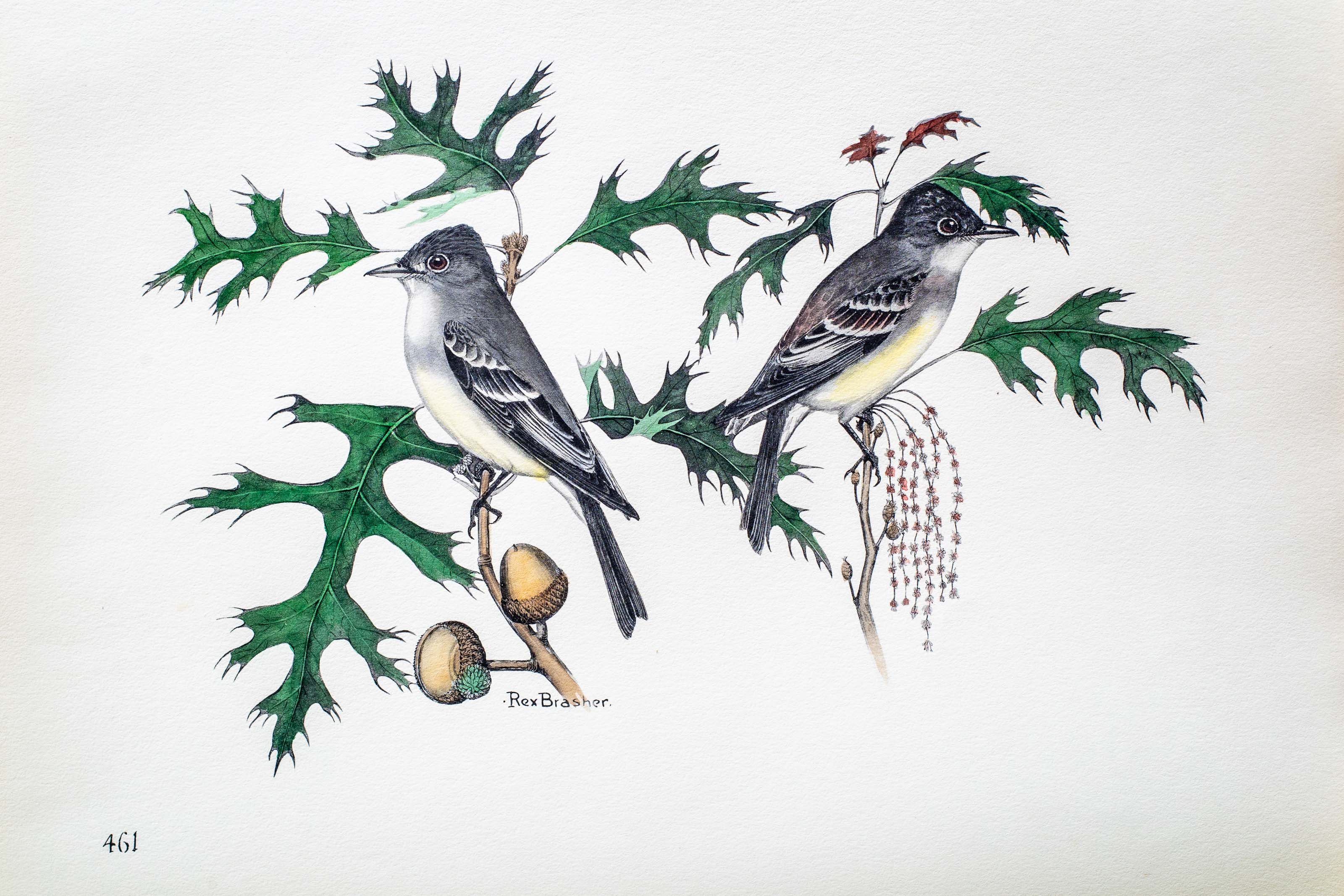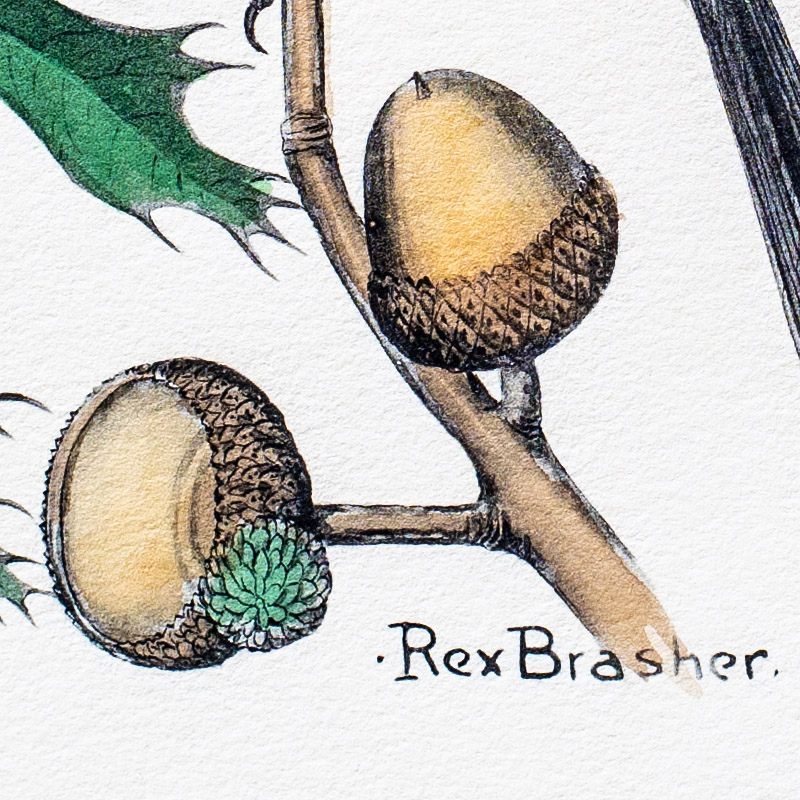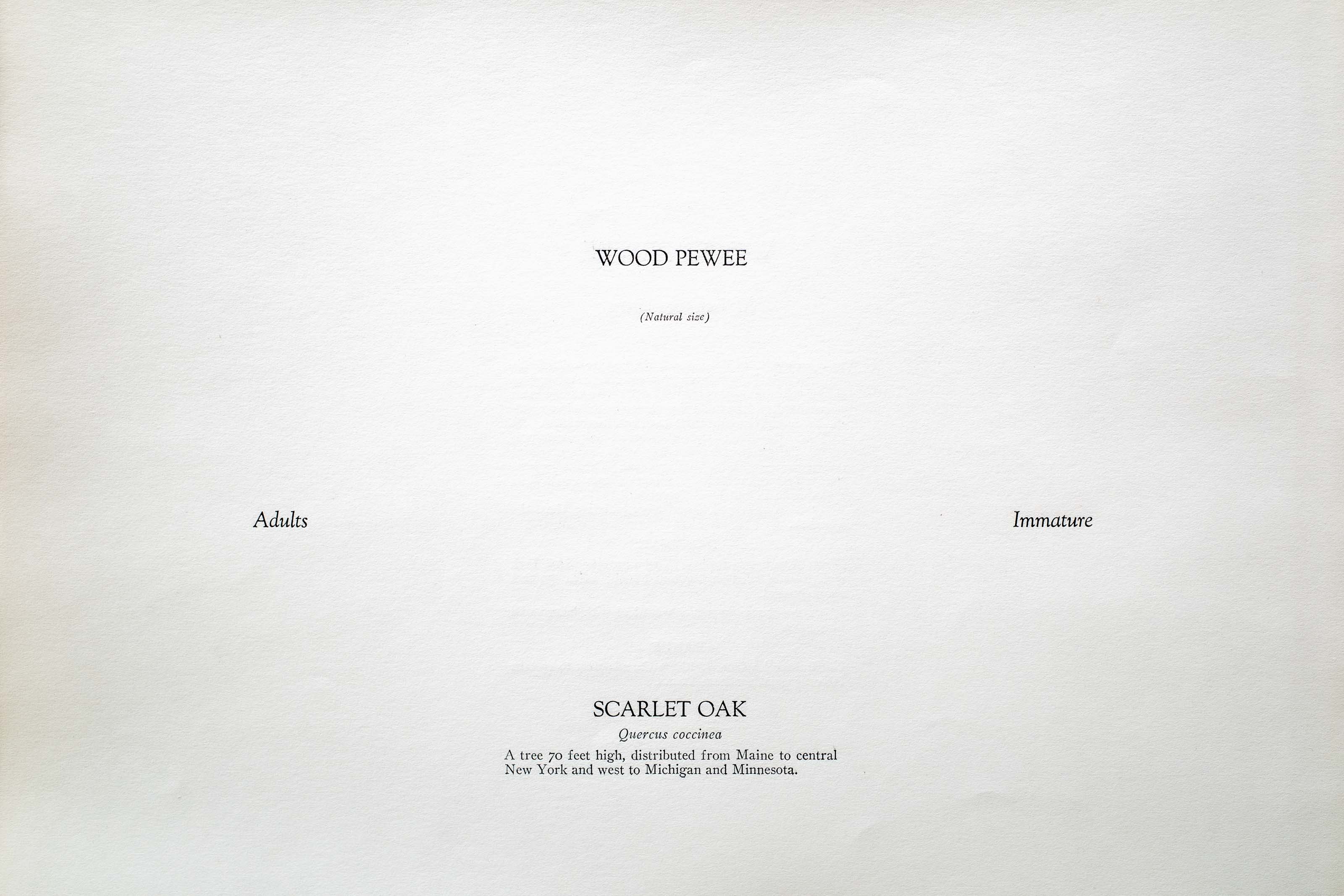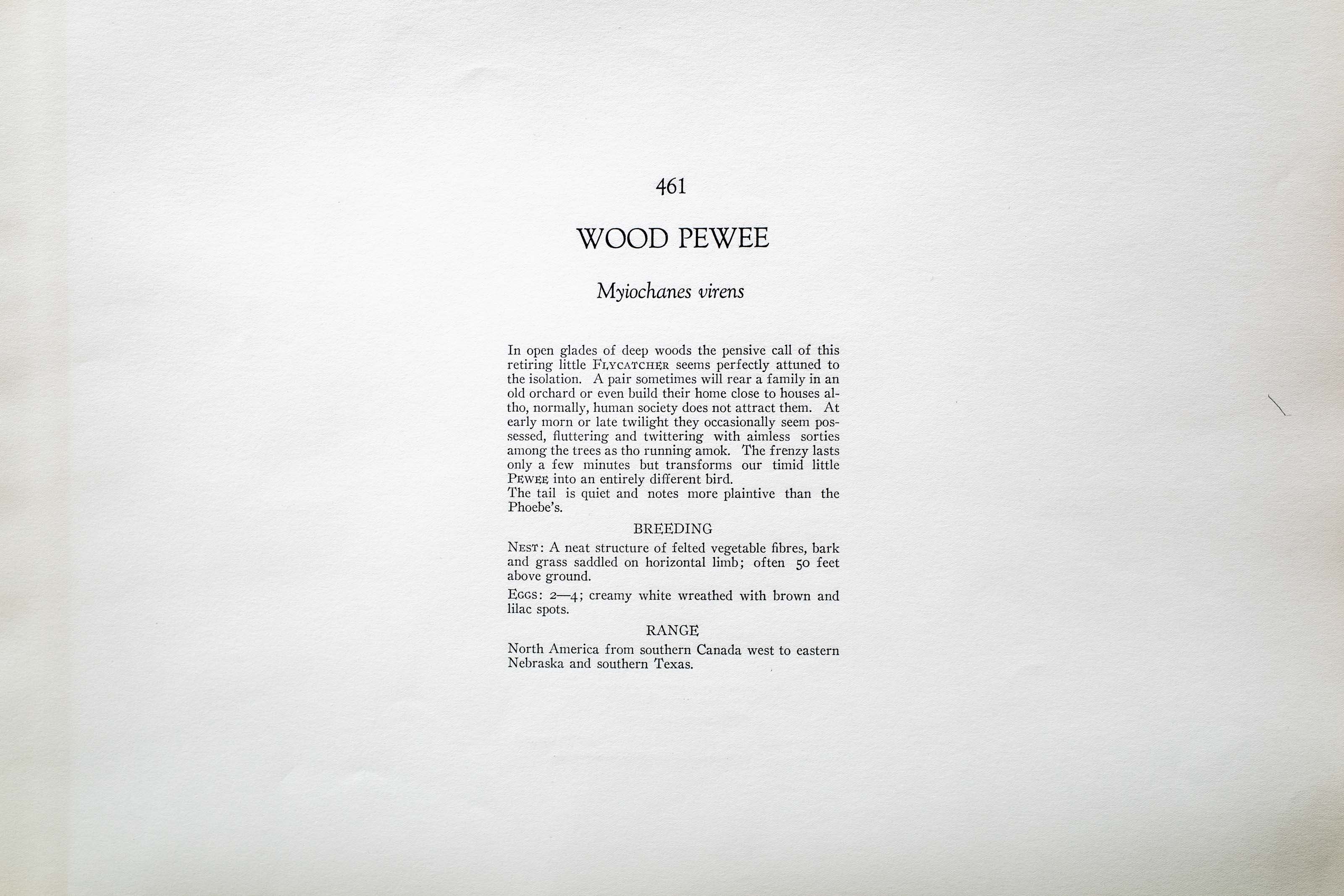






Unknown
1931
7
461
A team of dedicated board members, volunteers, and student interns has published every page in Volume 9. This volume includes 360 images of paintings and lyrical descriptions of birds, now available online for everyone to enjoy anywhere in the world. This is a monumental task. Each volume requires approximately 400 hours to photograph, edit, transcribe, catalog, and publish online. We need your support to complete this work.
If you're tech-savvy, have a good eye, are meticulous with details, and love structured data, please consider volunteering by emailing us at hello@rexbrasher.org.
We encourage all bird lovers and supporters to consider a monetary donation to support our mission to make Rex's work available for everyone. You can provide a one-time or recurring donation online.
In open glades of deep woods the pensive call of this retiring little FLYCATCHER seems perfectly attuned to the isolation. A pair sometimes will rear a family in an old orchard or even build their home close to houses altho, normally, human society does not attract them. At early morn or late twilight they occasionally seem possessed, fluttering and twittering with aimless sorties among the trees as tho running amok. The frenzy lasts only a few minutes but transforms our timid little PEWEE into an entirely different bird.
The tail is quiet and notes more plaintive than the Phoebe's.
NEST: A neat structure of felted vegetable fibres, bark and grass saddled on horizontal limb; often 50 feet above ground.
EGGS: 2–4; creamy white wreathed with brown and lilac spots.
North America from southern Canada west to eastern Nebraska and southern Texas.
A tree 70 feet high, distributed from Maine to central New York and west to Michigan and Minnesota.